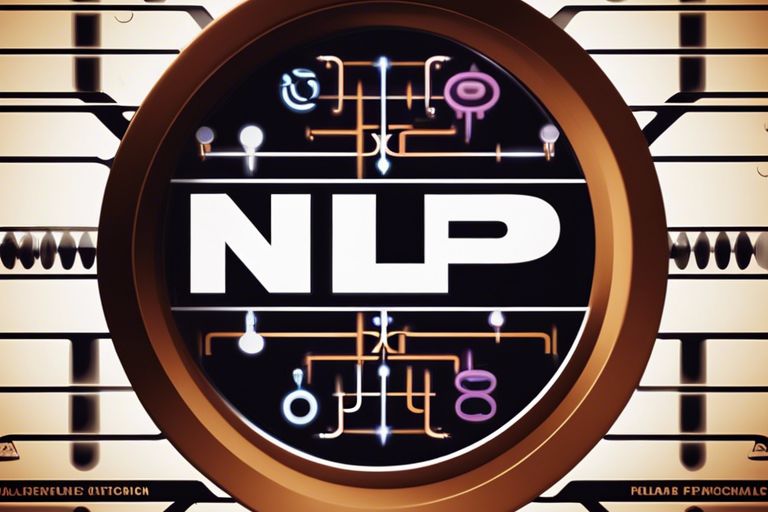You may have heard of Neuro-Linguistic Programming (NLP) as a powerful tool for communication and personal development, but did you know it can also be incredibly valuable for marketers? By understanding the basics of NLP and how to apply them in marketing strategies, you can enhance your effectiveness in reaching and resonating with your target audience. In this blog post, we will simplify NLP concepts and provide practical tips and tricks that every marketer should know to achieve success in their campaigns.
Understanding the Basics of NLP
Key Principles of NLP
One of the key principles of Neuro-Linguistic Programming (NLP) is the idea that our thoughts, feelings, and behaviors are interconnected. By understanding how these elements influence each other, marketers can effectively communicate with their target audience and create more impactful marketing strategies. NLP emphasizes the importance of language and communication in shaping our perception of the world around us.
How NLP Influences Human Behavior
Principles of how NLP influences human behavior revolve around the concept that our minds have patterns and structures that can be identified and altered to achieve specific outcomes. By recognizing and reprogramming these patterns, marketers can tap into the subconscious desires of consumers and tailor their messaging to influence purchasing decisions. Understanding human behavior through the lens of NLP allows marketers to create more persuasive and engaging marketing campaigns.
Plus, by utilizing techniques such as mirroring, pacing, and leading, marketers can build rapport with their audience and establish trust, making their messages more compelling and influential. NLP provides a framework for understanding the complexities of human behavior and leveraging this knowledge to drive successful marketing outcomes.
Applying NLP Techniques to Marketing
Building Rapport with Your Audience
Applying Neuro-Linguistic Programming (NLP) techniques to marketing allows marketers to establish a strong connection with their audience by building rapport. By mirroring the language patterns, gestures, and emotions of your target market, you can create a sense of trust and understanding. This communication strategy helps in fostering long-term relationships and improving brand loyalty.
Crafting Persuasive Messages
Techniques derived from Neuro-Linguistic Programming can be invaluable in crafting persuasive messages that resonate with your audience. By understanding the language preferences and sensory cues of your target market, marketers can tailor their content to appeal to specific desires and emotions. This personalized approach increases the effectiveness of marketing campaigns and drives consumer engagement.
Audience analysis is crucial when applying NLP techniques to crafting persuasive messages. By identifying the values, beliefs, and motivations of your audience, marketers can create compelling content that speaks directly to their needs and desires. This targeted communication approach enhances the impact of marketing efforts and helps in achieving desired outcomes.
Enhancing Communication Skills with NLP
The Power of Language in Marketing
With the advent of Neuro-Linguistic Programming (NLP), marketers can now harness the power of language to influence consumer behavior effectively. By understanding the psychological impact of words and framing messages in a way that resonates with the target audience, marketers can create compelling campaigns that drive engagement and sales.
Mastering Non-Verbal Cues for Better Engagement
Better communication goes beyond words; it also involves mastering non-verbal cues for better engagement. This includes gestures, facial expressions, and body language, which play a significant role in conveying emotions and establishing rapport with consumers. By paying attention to these subtle cues, marketers can enhance their communication skills and build stronger connections with their audience.
This skill is especially crucial in face-to-face interactions, where non-verbal cues can make or break a sales pitch or negotiation. By mastering the art of reading and utilizing non-verbal cues effectively, marketers can gain a competitive edge and elevate their communication strategies to new heights.

Advanced NLP Strategies for Marketing Success
Not all marketing strategies are created equal, and when it comes to Neuro-Linguistic Programming (NLP), there are advanced techniques that can take your marketing efforts to the next level. Research has shown the relevance of NLP to effective marketing communications, as detailed in a study titled The relevance of neuro-linguistic programming to effective marketing communications. Let’s research into some of the advanced NLP strategies that can help you achieve marketing success.
| Modeling Excellence in Marketing Campaigns | Embedding Commands for Subconscious Influence |
Modeling Excellence in Marketing Campaigns
Marketing excellence can be achieved through NLP techniques that involve modeling successful marketing campaigns. By analyzing and replicating the strategies, communication styles, and tactics of top-performing campaigns, marketers can enhance their own campaigns to yield better results. This method allows marketers to leverage proven success factors and tailor them to their specific target audience for maximum impact.
Embedding Commands for Subconscious Influence
Subconscious influence plays a crucial role in consumer decision-making, and embedding commands in marketing communication can tap into this powerful aspect of the human mind. By using NLP techniques to subtly insert suggestions and commands into marketing content, marketers can influence consumer behavior on a subconscious level. This strategy can help shape perceptions, preferences, and actions in ways that align with marketing objectives, ultimately driving conversions and boosting brand engagement.
Advanced techniques in embedding commands for subconscious influence involve crafting compelling narratives, utilizing persuasive language patterns, and creating sensory-rich experiences that resonate with the target audience’s subconscious mind. By mastering these advanced NLP strategies, marketers can unlock the full potential of their marketing campaigns and drive unprecedented success in the competitive landscape.
Conclusion
Summing up, Neuro-Linguistic Programming (NLP) is a powerful tool for marketers to enhance their communication and persuasion skills. By understanding the principles of NLP and applying techniques such as mirroring, pacing, and anchoring, marketers can create more engaging and influential marketing campaigns. It is crucial for every marketer to grasp the basics of NLP and incorporate them into their strategies to achieve marketing success. With practice and dedication, mastering NLP can make a significant impact on how marketers connect with their target audience and drive desired actions. These tips and tricks are just the beginning of utilizing NLP for marketing success, and continuous learning and experimentation can lead to even greater achievements in the field.
FAQ
Q: What is Neuro-Linguistic Programming (NLP) in the context of marketing?
A: Neuro-Linguistic Programming (NLP) is a psychological approach that focuses on the connection between neurological processes, language, and behavioral patterns. In marketing, NLP techniques are used to understand and influence consumer behavior through effective communication strategies.
Q: How can NLP benefit marketers in their efforts?
A: NLP can benefit marketers by providing insights into consumer preferences, motivations, and decision-making processes. By using NLP techniques, marketers can tailor their messaging and strategies to better resonate with their target audience.
Q: What are some key NLP techniques that marketers can use?
A: Some key NLP techniques that marketers can use include mirroring and matching, sensory language, anchoring, reframing, and cultivating rapport. These techniques help marketers establish connections with consumers and communicate more effectively.
Q: How can mirroring and matching be applied in marketing using NLP?
A: Mirroring and matching involve subtly imitating the body language, speech patterns, and gestures of your audience to build rapport and establish trust. In marketing, this technique can be used to create a sense of familiarity and connection with consumers.
Q: What is anchoring in NLP and how can marketers leverage it?
A: Anchoring in NLP is the process of associating a particular stimulus with a specific emotional response. Marketers can leverage anchoring by pairing their brand or product with positive emotions or experiences, creating a lasting impression on consumers.
Q: How can marketers use reframing techniques based on NLP principles?
A: Reframing involves changing the way an idea or message is presented to alter the perception of the audience. Marketers can use reframing techniques to position their products or services in a more favorable light, addressing consumer objections and concerns effectively.
Q: Why is cultivating rapport important for marketers using NLP?
A: Cultivating rapport is crucial for marketers using NLP because it helps establish a strong connection with consumers, leading to increased trust and engagement. By building rapport, marketers can better understand the needs and preferences of their target audience, ultimately driving successful marketing campaigns.




